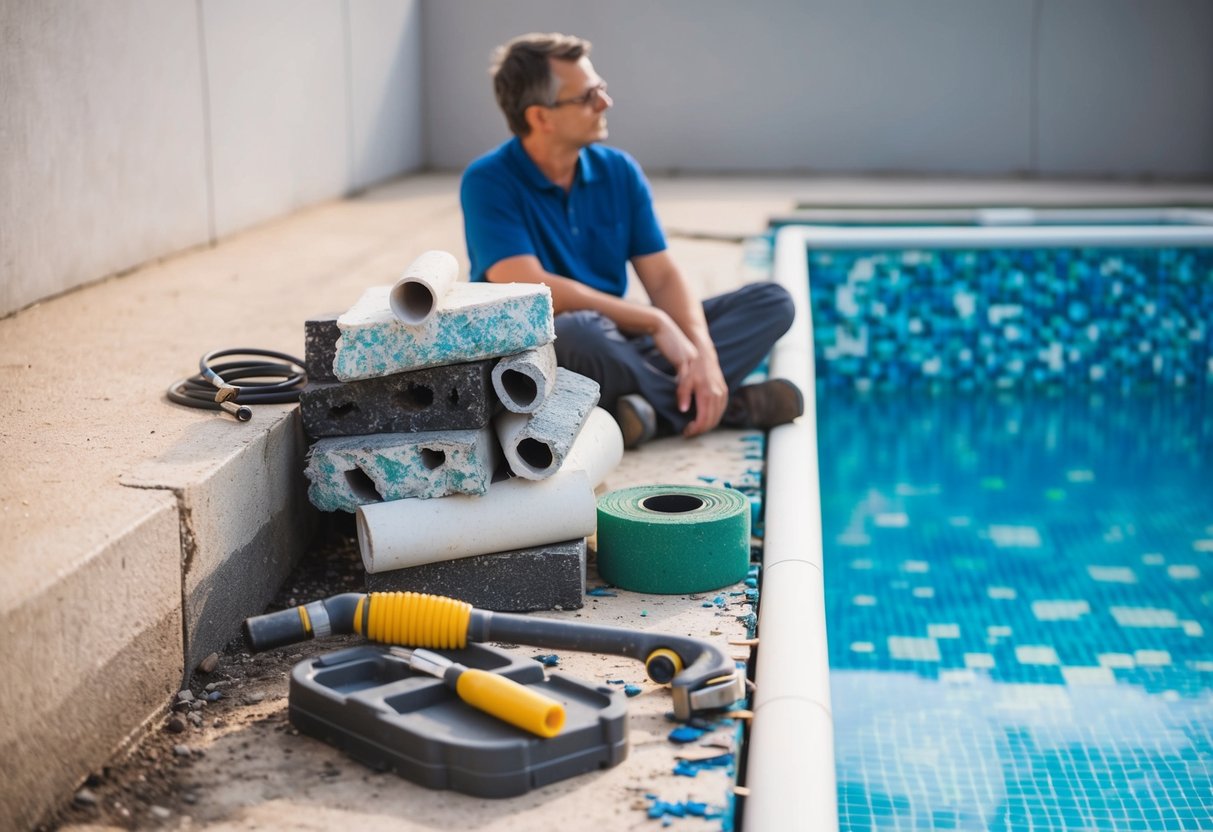Understanding Pool Resurfacing

Pool resurfacing involves replacing the top layer of your pool to extend its life and improve its look. Knowing the types of surfaces and signs that indicate resurfacing is needed can help us maintain our pools effectively.
Types of Pool Surfaces
We have several options when choosing pool surfaces. Plaster is common and affordable, providing a smooth finish, but it may wear faster. Fiberglass is durable and less prone to algae. It requires less upkeep than plaster. Aggregate finishes mix pebbles or glass beads into plaster, creating a textured, attractive look. This option is long-lasting and resistant to chemical and staining issues. Each type has its benefits, and the choice depends on our budget, maintenance preference, and desired appearance.
Signs Your Pool Needs Resurfacing
Recognizing the signs of wear can save us money.
- We should look out for discoloration, which often indicates plaster failure.
- Cracks can lead to leaks and further damage.
- Rough texture might mean the surface is eroding.
- Stains and peeling also suggest that it’s time for resurfacing.
By identifying these signs early, we can address them before they worsen, ensuring our pool remains safe and enjoyable. Regular inspections help catch these issues in time.
DIY Pool Resurfacing Pros and Cons
When considering DIY pool resurfacing, there are some benefits and challenges we should keep in mind. We’ll look at the cost-saving potential alongside the skills and effort required.
Advantages of DIY Resurfacing
Cost savings is a key benefit in taking the DIY route. By handling the work ourselves, we avoid expensive labor fees typical of hiring professionals. This makes the project more affordable, freeing up budget for quality materials or other pool upgrades.
Flexibility in choosing resurfacing options is another plus. We can select from materials like paint for a quick refresh or opt for an aggregate finish for a more durable and textured surface. DIY gives us control over the timing of the project, allowing it to fit our schedule.
Embarking on a DIY project also provides a sense of accomplishment. Successfully resurfacing a pool boosts our confidence in our abilities and can increase the value and enjoyment of our properties.
Challenges and Limitations of DIY
The main challenge is the skill and knowledge required. Pool resurfacing is complex. We need to understand materials, such as aggregates or paints, and know how to apply them correctly. Mistakes can be costly, both in terms of money and time, if a redo is necessary.
Safety concerns are also present. Handling chemicals and heavy equipment requires care to avoid accidents. Without proper safety measures, there’s a risk of injury during the project.
Time commitment is significant. Since the work cannot be rushed, particularly curing times for certain materials, we must be prepared to dedicate several weekends or more to complete the task. This can be demanding with our other responsibilities.
Professional Pool Resurfacing Services

When you choose professional pool resurfacing, you gain access to expert skills and a hassle-free process. This can lead to a longer-lasting and better-quality pool surface.
Benefits of Professional Resurfacing
Professional services offer expertise to ensure a high-quality finish. They have the knowledge to choose the best materials and techniques for your specific pool. This can extend the life of your pool surface.
Experienced teams handle the entire process. They can take care of preparation, repair, and application. This not only saves time but also reduces stress for us.
Hiring professionals often comes with a warranty. This provides peace of mind, knowing any future issues might be covered.
Selecting a Pool Resurfacing Service
Choosing the right service means evaluating several factors. We should start by looking at customer reviews and ratings. These can give insight into previous clients’ experiences.
Checking credentials is crucial. Ensure the company holds the necessary licenses and insurance. This guards against potential problems.
Finally, it’s wise to get multiple quotes. Comparing prices and services helps in making an informed decision. A detailed contract outlining the scope of work ensures clarity for both parties involved.
Comparing Costs and Outcomes
When considering DIY pool resurfacing versus hiring a pool resurfacing service, cost is a major factor. DIY pool resurfacing can be cheaper, mainly because we only pay for materials, not labor.
On average, materials for DIY resurfacing can cost between $1,000 and $2,500. This includes patch kits, resurfacing paste, and paint. We should factor in additional tools if not already owned.
In contrast, hiring a pool resurfacing service usually costs much more. Prices often range from $4,000 to $10,000, depending on the pool size and type, like fiberglass pools.
Though DIY options seem much cheaper, outcomes may vary. Quality is crucial for long-lasting results. A professional service typically offers more consistent quality and surface finish.
We may face challenges when doing it ourselves, like fixing leaks or dealing with chemicals. This could affect the final outcome. Professional services promise reliable and skilled work.
Outcomes Table:
| Aspect | DIY Pool Resurfacing | Pool Resurfacing Service |
|---|---|---|
| Cost | Lower | Higher |
| Quality | Variable | Consistent |
| Time Investment | Higher | Lower |
| Expertise Required | Self-taught | Professional |
| Handling Leaks | Potential difficulty | Professional management |
Pros and cons exist for both methods. By weighing costs and likely outcomes carefully, we decide which suits our needs better.

